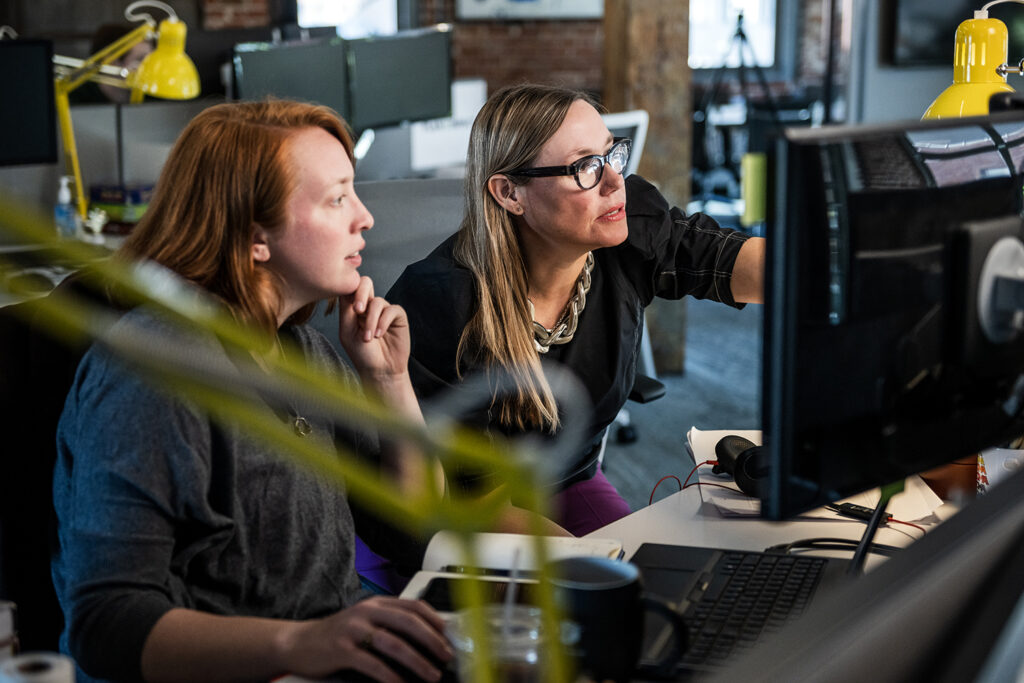An important consideration in what has been dubbed “The Great Resignation” is that one in four women has left the workforce largely due to the stresses of balancing home and work life during Covid. “The Atlantic” recently published this data with the estimation that this year has set the United States back years, if not decades, in terms of workforce equity for both women and minorities. As I reflect on this stunning information, I’m reminded of a relevant moment in graduate school. More than twenty years ago, the dean of the school of architecture addressed a room full of architecture students, half of which were women. He declared that “women, specifically those who have children, can’t practice at the level required to make it to the top in architecture.” He asserted that they “fall behind and can’t catch up.” Of course, there was no mention of the male students in the room and their life choice to become fathers. From the dean’s perspective, the men were free to procreate and simultaneously advance professionally without concern. I often wonder what effect this proclamation had on us, and the other students who came before and after us. It was a flatly sexist comment that I believe ultimately affected all of our choices. Many women in our class didn’t end up having children, either by choice or fate. Not everyone wants to be a parent, of course, or other extenuating circumstances play into this very personal issue. Still, the subject of having children should never have been laid out as an ultimatum. The pronouncement was also a disservice to the men who believed having children wouldn’t affect their careers in any way. Our generation commonly practices “co-parenting” and sharing the load, allowing us to lead rich family lives while working at the top of our game. I don’t know how this comment resonated with our LGBTQ classmates, but I would imagine it didn’t make them any more inclined to become parents, either.
Learning of the decreasing female workforce feels like a similar gut-punch, in that it’s hard to imagine that our industry is still overdue to address these inequities of life and work balance after a life of striving and working. It is challenging to look within and think about our own biases and how we continually, every day, shape this present profession with the decisions we make and the language we use. Having lived on both coasts, with an Ivy League education, and working in one of the top international architecture firms, I came to dread those words of warning from my dean as accurate. Because of this fear, my husband and I decided to move to the Midwest to Kansas City, where it seemed that an ark of development was just starting, and many more possibilities were available to chart our personal path. After 15 years of operating my award-winning practice and now having survived a year of COVID-19, I’m again faced with the gender and racial equity divide. Talking with co-workers about the horrible difficulty of the past year and how they coped or sometimes just weren’t able to has been heartbreaking. Even as fortunate as we are, my own year was incredibly stressful. My husband and I worked demanding jobs, running what seemed like constant Zoom meetings while trying to school and care for our two young children. We also endured a major health crisis when my husband had open-heart surgery right at the height of the Covid outbreak.
There were breakpoints where I can’t say I handled things gracefully, trying to manage daily domestic needs that came even more acutely into focus and trying simultaneously to be the best in my craft. DRAW is a fast-paced, research and design-focused architecture firm. Sometimes the two were not at all feasible to achieve. But these were extreme circumstances where I was cut off from my support network of teachers, family, and caretakers. Only now are we beginning to regain that vital network. These networks must be built back for everyone – none of us deserve to be delivered an ultimatum to choose between personal and professional life.
Even though we’ve accomplished so much at DRAW, we work non-stop to advance our mission of Positive Impact Design for our clients and communities. I’ve learned there’s more we can do to care for each other and create a safe space for people to communicate about their struggles. I am so grateful to my co-workers for their effort, talent, and vulnerability in sharing their personal challenges in getting through this jumble of a year.
The news of women and minorities leaving the workforce shines a different light as I process the events of 2020-2021. I choose to use this time to grow and learn to connect with others because of their struggles. I believe we can all reach our potential if we responsibly lift each other up. The dilemma of work/life balance belongs to all of us.




